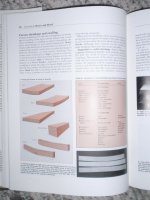Gale Hawkins
Super Member
- Joined
- Sep 20, 2009
- Messages
- 8,072
- Location
- Murray, KY
- Tractor
- 1948 Allis Chambers Model B 1976 265 MF / 1983 JD 310B Backhoe / 1966 Ford 3000 Diesel / 1980 3600 Diesel
We went to look at a new like 6'10"x12' tilt trailer that was build in Mar 2012. The ad called the decking treated. It is marked #3 and look like run of the mill yellow pine but it was dark by the time we got there but lighting was OK.
I was thinking pressure treated so I was caught off guard. After getting it home I have decided they must just be spraying stuff on it and letting people assume treated meants pressure treated. The trailer is an O'Neal out of west TN and the steel part looks fine and pulled great at 70 MPH on I-24 coming home. They did not even turn the best side up of the 2x8's in all cases. Thankfully as noted the metal work looks good and the welds appear to be of high quality.
The trailer is an O'Neal out of west TN and the steel part looks fine and pulled great at 70 MPH on I-24 coming home. They did not even turn the best side up of the 2x8's in all cases. Thankfully as noted the metal work looks good and the welds appear to be of high quality.
Now I will have 10" on either side when loading the mower.
The seller is a trader and said he just wanted his money back out of the trailer but he sold per him for $190 less than he had in it but he was not crying when we left. In fact he loaded up the wife and kids and headed to WM I think. :laughing:
I was thinking pressure treated so I was caught off guard. After getting it home I have decided they must just be spraying stuff on it and letting people assume treated meants pressure treated.
Now I will have 10" on either side when loading the mower.
The seller is a trader and said he just wanted his money back out of the trailer but he sold per him for $190 less than he had in it but he was not crying when we left. In fact he loaded up the wife and kids and headed to WM I think. :laughing:

